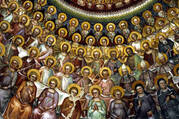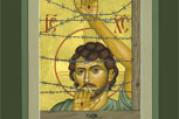Click here if you don’t see subscription options

Season of Remembrance
The sensitive reflection by George M. Anderson, S.J., about renewing on each November day, with deep gratitude to God, the memory of some recently deceased friend (Of Many Things, 11/3) constituted, I am sure, his daily act of faith in life eternal. As a valued fringe benefit, his column nudged me and, no doubt, many other readers back to basic sanity. Yes, Frank Sheed’s striking observation in The Church and I came to mind: By sanity I mean seeing what’s there. Who doesn’t? you ask. Who does? I answer. If a man starts seeing things that are evidently not there, we call him insane and do what we can for him. But a man may fail to see the greater part of reality and cause no comment at all. He may live his life in unawareness of God, of the spiritual order, of the unnumbered millions of the dead, and nobody thinks of him as needing help....
Thank you, Father Anderson, for nudging me back to spiritual sanity. My Novembers will be a bit different from now on.
Larry N. Lorenzoni, S.D.B.





Educational Values
Thank you, Thomas McCarthy, for your direct and honest comments on our schools in Swimming Upstream (10/6). The amount of time, energy and implied worth that is given to supporting the prevailing cultural values has increased at a disturbing rate, and in direct opposition to what we say Catholic education is all about. Using fund-raising rather than stewardship as a model, we are doing little to model the Eucharist, countercultural values or the creative awe and wonder that are so significant to a child’s faith formation. You are not alone in your reactions, simply more courageous than far too many parents and administrators.
Mary Therese Lemanek




